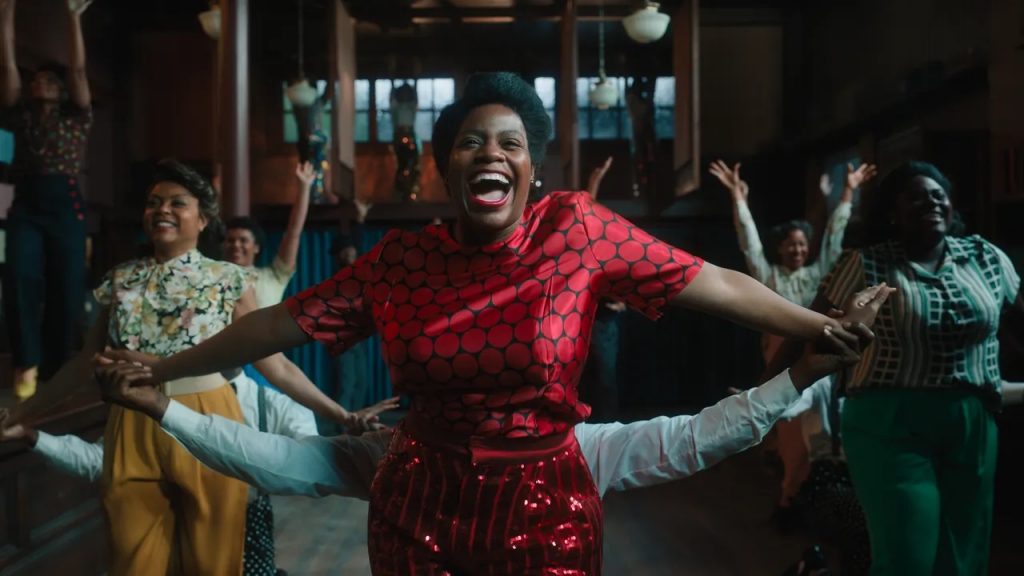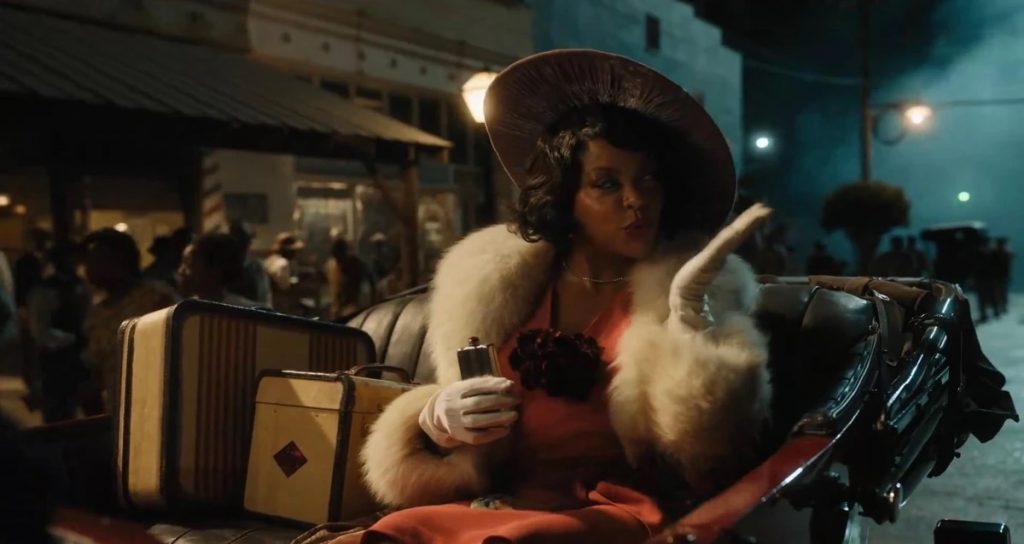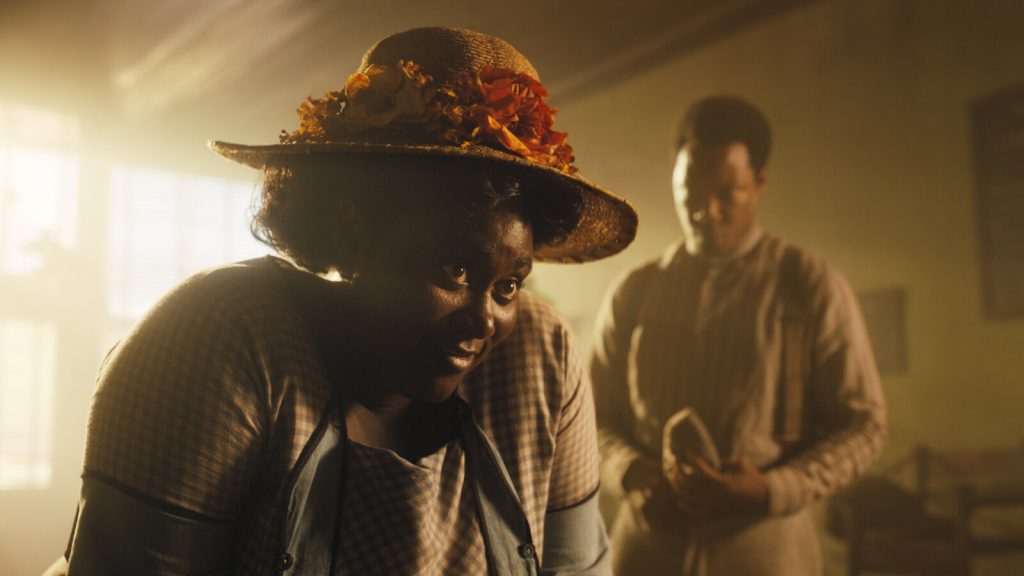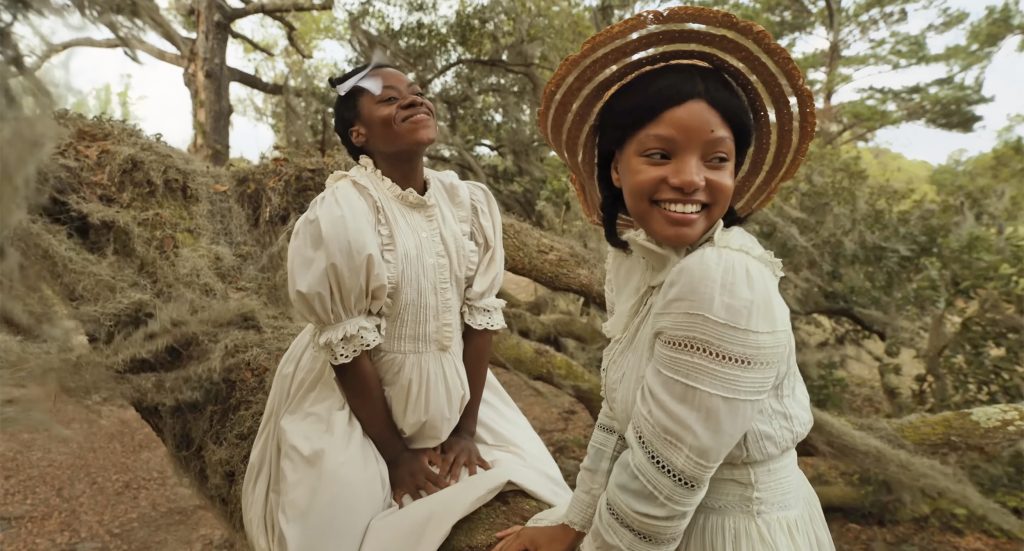
The Color Purple is a true epic. The musical, based on Alice Walker‘s classic novel, is a large canvas with its ensemble and passage of time. In the hands of filmmaker Blitz Bazawule and his cast and crew, the drama is a smooth and clean narrative, in which all the characters and years are given due time.
Editor Jon Poll lets the narrative breathe, and as a result, entertain, break hearts, and move. “I’m so honored to have been a part of this and to have heard what Blitz wanted to make,” Poll told Below the Line, “and unsuccessfully talk him out of hiring me and be a part of an incredible collaboration. I will say to this day, I am moved by different things in the movie every time I see it. And I hope enough people see it and have the same feeling.”
Poll, who directed Charlie Bartlett, is the editor behind several Jay Roach films and The Greatest Showman recently spoke with Below the Line about editing The Color Purple.
[Note: This interview has been edited for clarity and length.]
Below the Line: Was The Greatest Showman your only other musical before The Color Purple?

Jon Poll: Pretty much. In all honesty, one of the ways I tried to talk Blitz out hiring was to say on The Greatest Showman, I didn’t really cut the musical sequences, but I didn’t want that getting me in trouble. I wanted to be straightforward. So yeah, Color Purple is really my first musical.
BTL: What were your expectations and how did the reality compare to cutting musical numbers?
Poll: Well, after I met Blitz, I heard his take on the movie and about exploring Celie’s (Fantasia Barrino) fantasies and imagination, it made sense as why we would make another Color Purple. Obviously it’s a very different movie from the Spielberg movie and it’s very different from the Broadway play.
Even though trauma is kind of the main thing we see and know of in The Color Purple, the movie is about surviving it and overcoming it and how we as human beings can do that. I don’t know, that kind of was everything in terms of cutting musical numbers. Our whole approach to the movie was to try and make it more seamless, going in and out of making it one movie. The dialogue scenes in the music we found, we tried to find every way we could to combine them and make them smoother.
We use sound effects, we use dialogue. A lot of the musical numbers come out are made in a diegetic way. They exist in that world, so hopefully there’s less Ta-da putting on a show, and you’re not taken out of the movie. I mean, this movie’s all about feelings and you’re still having those feelings and there’s wonderful ones and there’s terrifying ones. I think they all come through in each of the music numbers in different ways.
It’s always changing and each of those numbers are very different. You’ll notice most of the movie is not really cut very fast, especially compared to today’s style, and that’s very intentional. We were trying to treat the audience with respect. We know we’re flying through time and we’re kind of creating a shorthand with them. We have a few of these dates, but really it’s just to say, “Hey, we’re going through time and stuff’s happening. It’s no accident. They’re aging here.”
I think all of how we treat the music and the dialogue scenes we really think of as one, and the fantasies and the real life stuff we really think of as one. We just try to keep people in the movie where not have them fall out, which I think is something that can happen in typical musicals. And look, I have as much fun as anyone watching Singin’ in the Rain, but it’s funny, when I first met with Blitz, I mentioned some movies that some people don’t even say are musicals that were my favorite musicals.
Walk The Line, it’s filled with music and their story is told on stage between them. Ironically, here I am, it’s two years since I first got hired on the movie and I see the connection. I think we were successful in not making the movie feel like a typical musical. I believe that’s why there’s so much feeling.
A friend of mine, a director I’ve worked with a lot, saw the movie and he said, “I have so much feeling watching the movie, I wonder if it’s the idea that it’s a musical.” So there are these heightened moments that let you appreciate it differently and open you up to all the feelings.

BTL: But the movie doesn’t shy away from those ta-da, we’re putting on a show moments, either. There’s still the joy of watching musical numbers. For example, “Shug Avery Comin’ To Town.” Such a huge number. How was it cutting that?
Poll: I mean, honestly, that’s something we did try to keep very lively, but again, if you noticed the big shot, there’s no coverage. We’re not cutting to anything. There’s a minute long take in the middle of that, and I think that helps you feel like it’s just happening.
That scene was really interesting because you know how we go to the house with Mister (Colman Domingo) and Celie and they sing along and get ready? There used to be a whole other chunk of the song. Actually, it’s a scene that got cut a fair amount because we knew once you go to the house with Celie and Mister, you really have to have Shug pull up outside. It wasn’t designed that way. So, we did do some music editing and definitely some picture editing to make that happen.
But yes, it is all about her coming to town and there’s such a drum with the birds and we’re really trying to set her up. That’s my feeling. The footage tells you what you can do. And when I got all the footage of Taraji [P. Henson] in her red dress [at the juke joint], oh, incredible.
I was just like, how do I use all of this? You could do a split screen number. There’s so many amazing pieces of Taraji’s performance, and sometimes you really want to see something in a closeup, and oftentimes you want to see her whole body. And we also wanted to feel like she took over that place. In the juke joint, there’s the dance break, and in fact, other songs had dance breaks that didn’t make it, but that was an amazing dance break. You’re all in shadows…
BTL: Very Bob Fosse. Very good.
Poll: Yes, yes, very Bob Fosse. There’s a nod there. And then we come back out and have one more piece of the song. And what’s really great about that is you really feel Taraji has taken the place over.
My favorite thing in that entire scene is when Taraji’s done singing, Mister is looking over at her, she’s going to come over to him, but of course she’s coming over to Celie and then you’re left with that look on his face. It’s great to see him have a little comeuppance there.
BTL: I talked to Francine about that red dress. Now I want to talk to you about editing the shot of her on the boat in that red dress. How was it timing that fantastic shot?
Poll: I am glad you got to see the movie on our big screen. Yeah, it’s a pretty amazing sequence. For Blitz, scale and memorable images were very important to him. And he said, “There’s nobody who’s going to forget this dress and Taraji.” Yeah, I think that sequence is a little bit everyone’s favorite. It’s joyous. And look, Taraji is amazing. Blitz kept saying to me, “We shot all night, John. The sun’s coming up and the dancers are all like 23 or 25 and they’re puffing and Taraji’s going, ‘Yeah, come on, let’s do this again.'”
What’s interesting about the musical numbers, I have such affection for all of ’em. There’s 15 songs in the film, and at one point or another everyone’s like, “Well, couldn’t you take that out? Couldn’t you take that out?” There were probably five or six songs Blitz and I never got a note that we didn’t try and look at in context. I can tell you why every one of those songs is still in the movie because of character and story.
BTL: You talked about knowing when to cut to an actor’s face during a number. How challenging is that, balancing close-ups for intimacy and going wide to appreciate the movement? For example, when Celie sings alone outside her shop.
Poll: Well, Blitz always said, “There’s a lot of very special visuals in the movie, and in the scheme of things, I’m here for her singing to us and you kind of forget it.” But the whole first half of the song when she’s inside is just one shot and it goes on for a couple minutes, and there’s a lot of moves within it, but it’s her singing setting up everything that’s going to come outside. That’s just really unusual.
I mean, even in a movie that’s not cutting a lot, just to be able to hold on her, Blitz always said, “This is Fantasia’s moment to just do her thing.” Outside we did have some coverage, but it’s basically one wide shot and then a side angle closeup. We used that side angle closeup sparingly, especially at the end of the song.
There’s a whole big chunk of that song where she is singing live and there’s no playback and we never put any instrumentation. It’s when she sings about, I’m here and I’m beautiful. I mean, Fantasia has an ability to find that emotion. It’s very close for her all the time.

BTL: How much debate was there over how to communicate the passage of time? How much screen time to dedicate to which period?
Poll: Our goal was to have a soft touch, not push. We were never trying to push the emotions on the audience. A couple times people said to us, “God, you guys, you’re not pushing the score like you normally would.” And we were like, “No, we don’t need to push the score. We don’t need to push the emotion. We don’t need to push the editing.”
This really should tell itself; the story and the characters and the performance are so strong. Our hope was to let it play simply. And obviously, there’s tons of coverage everywhere in most scenes, but on the other hand, Blitz was very specific about how he wanted the movie to feel. I think we lined up very closely on that.
You find your way through the movie, and there’s always pressure from studio of, can you make it shorter? And until you try things, you can’t really say no. What I loved about Blitz is, as I said, we would try everything and then we would look at it in context and watch two or three reels together. He stuck to his guns about all the scenes that needed to stay in the movie.
Neither of us thought the movie ended up long. It’s two hours and 10 minutes without the credits. It’s not a three hour movie. It easily could have been; takes Alice Walker seven hours to read that.

BTL: So, you got notes from the studio, of course, but what about the team behind the original film? Did Steven Spielberg, Oprah, and Quincy Jones give a lot of helpful feedback?
Poll: Quincy’s quite old and hasn’t been that involved, to be honest. But [producer] Scott Sanders, Oprah and Steven were very involved, and Blitz always had just an open door policy. We showed the producers the movie, I think two or three weeks into the director’s cut, because he wanted them to see it early and we wanted to start screening the movie for audiences and get their input.
Steven gave us quite a notes document after the first time he saw it. Notes are a fascinating thing. Oftentimes you get notes that are kind of development notes like, “Well wait, we can’t do that without a bunch of ADR or a reshoot; you’re not going to be able to pull that off.” That’s not the kind of notes Steven gave. They were very filmmaker to filmmaker, very actionable notes like, oh, well, that’ll actually work.
Look, Steven made a different version of the movie 40 some odd years ago. It’s kind of amazing. He could come in and be fresh and clean and he saw how different Blitz movie was and really liked it and liked how different it was and just wanted to help. He actually spent about five hours in the cutting room one day with us.
BTL: Was that a good day?
Poll: It was quite a day. Steven said, “Oh, I left my notes. I forgot them. Let’s just scroll through the movie.” And so, we would just scroll through the movie and he’d go, “Oh, I had a note here.” We’d just talk about it. It was amazing. Here’s a man, I don’t know how many movies he’s directed, and here’s Blitz, this incredibly talented artist from Ghana making his first studio movie, and we’re getting notes from Steven Spielberg. It’s pretty great.
The Color Purple is now playing in theaters.





